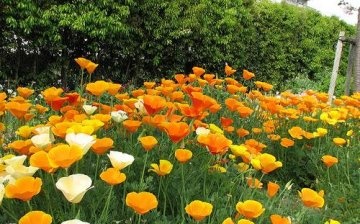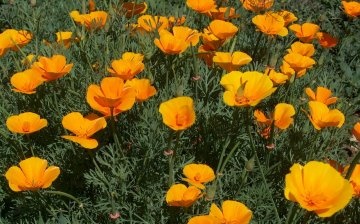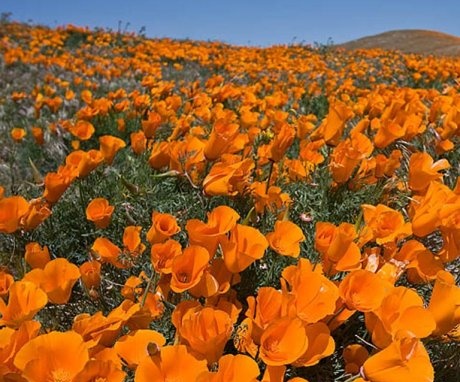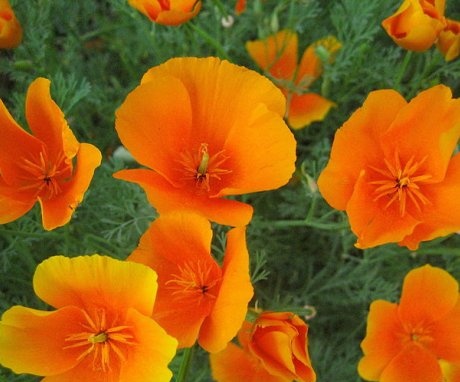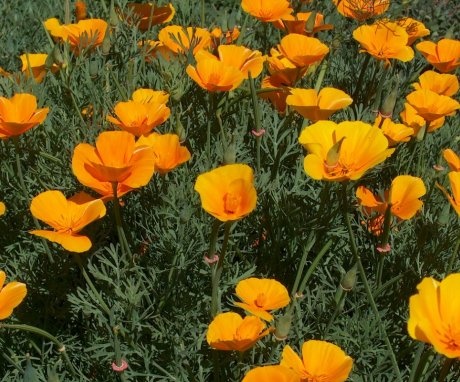Growing escholzia is a flower for the lazy
If you look at the picture showing blooming escholtia, then you involuntarily want to buy the seeds of these flowers and sow under the window. You just can't take your eyes off the bright inflorescences, I want to observe similar beauty in my garden. But how to grow such unusual flowers?
Content:
Why choose Eschsholzia?
Many flowering plants are known to be grown through seedlings, which must be germinated in advance, otherwise you will not wait for flowering. This process seems troublesome and lengthy, which stops novice florists. Such unusual flowers, as in the picture, can be very demanding and difficult to care for, no matter how you regret buying the seeds of these plants later. Therefore, bright flower beds with "sunny" flowers remain an unrealized dream of many lovers of blooming gardens.
For indecisive, one might say lazy, flower growers are perfect for escholzia... It turns out that this plant is completely unpretentious and begins to bloom in advance. Having sown seeds in late April - early May, the plant blooms after 1.5 months and blooms profusely until the end of October! It is not capricious and very resistant to changes in weather conditions. It reacts perfectly to the sun's rays and patiently endures the summer heat, but on rainy days, as if defending itself, it hides its beauty, closing the flowers in dense buds.
Eschsholzia is classified as an annual flowering plant, but perennial forms are also found. The most common species is the Californian escholzia, also called the Californian poppy.
This plant blooms with flowers of medium size 5 centimeters in diameter, formed by 4 large petals each.
Among the varieties of this species, there are plants with simple, semi-double and terry flowers. They can be white, yellow, bright orange. A real sunny flower!
You can grow escholzia from seeds collected with your own hands. They are extracted from the ripe fruits of the plant - pod-shaped capsules. They form about a month after the buds have faded. The yellowed pods open quickly, and the seeds spill out together on the ground.
You need to catch this interesting moment in order to have time to collect seed. Keep in mind that seeds can be stored for no more than 3 years. After this period, germination significantly deteriorates.
How to care for escholzia?
Eshcholzia seeds are sown directly into the ground in early spring, as soon as the topsoil warms up. The plant loves when the sun's rays caress the flower petals, so the sunniest area in the garden is chosen for it. In the shade or partial shade, the bushes will grow slowly, and you may not see flowering at all.
If the seedlings are dense, they must be thinned out, leaving a distance of 18-20 centimeters between the shoots. Growing up, escholzia turns into a lush creeping bush.
Escholzia does not tolerate damp, heavy soils; sandy loam soil with good drainage is best for it. This plant cannot be fertilized with liquid manure; use nitrophoska or vermicompost for feeding.
Eschsholzia does not require special glaze, except that in the dry season, when the rains almost never fall.Watering is best done in the evening, when the buds are closing, as if they are getting ready for bed.
Do not overdo it with moisture, since the root system should not be overmoistened, from this the roots quickly rot and the plants die.
Under favorable conditions, Escholzia branches luxuriously and blooms profusely. Its finely dissected bluish leaves form a dense lacy cobweb, on which numerous flowers appear.
To make the plants look brighter and more spectacular during flowering, it is necessary to remove dried buds and leaves. This "cleaning" needs to be done quite often, since the flowers live only 3-4 days and quickly wither, and more and more new buds are formed nearby.
Pay some more attention to the escholzia
Eschsholzia painfully tolerates transplants, its roots are long, rod-shaped and easily injured when excavated. Therefore, choose a permanent place in the garden for plants at once, so as not to expose Escholtia to stress once again.
It takes very little time to protect Escholzia from disease. The plant can be damaged by the bean aphid, which rapidly destroys the openwork foliage.
As soon as you notice a brownish coating on the curled leaves, immediately spray the entire plant with herbicides.
If this is not done in time, the leaves and flowers begin to deform and the plant stops growing, and eventually dies. In rainy weather, escholzia can become sick and covered with rot spots. Destroy the affected leaves immediately, otherwise the entire bush will be covered with gray spots, wither and disappear.
You are convinced that caring for escholzia is not at all troublesome, therefore you can safely buy seeds and grow these amazing flowers in your garden.



